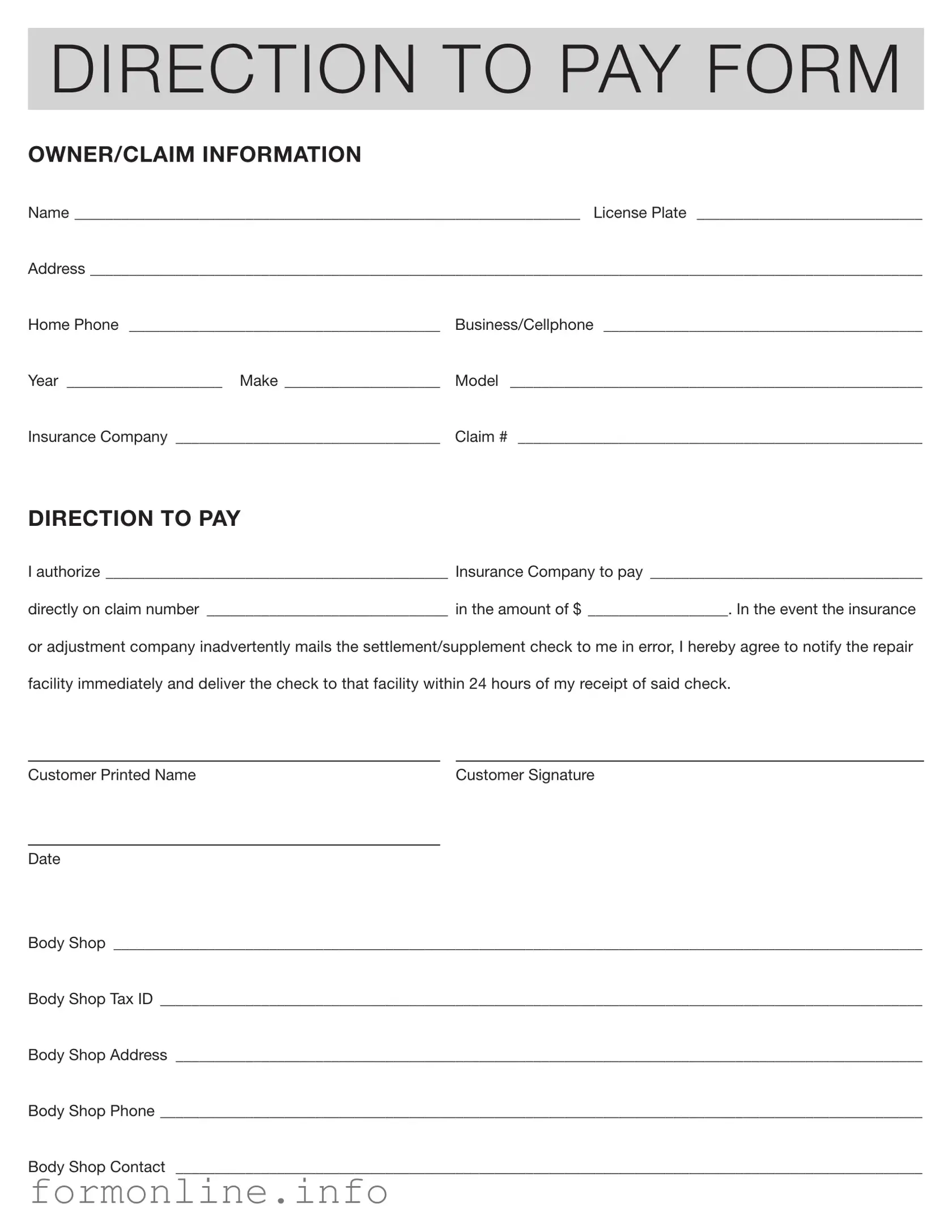The Authorization and Direction to Pay form is quite similar to a Power of Attorney (POA). A Power of Attorney grants someone the authority to act on behalf of another person in legal or financial matters. Like the Direction to Pay form, a POA requires the principal's consent and outlines specific powers granted to the agent. Both documents ensure that one party can manage certain transactions or decisions, providing a clear direction for financial dealings, whether it’s for an insurance claim or other legal matters.
Another document comparable to the Direction to Pay form is the Assignment of Benefits (AOB). An AOB allows a policyholder to transfer their insurance benefits to a third party, such as a contractor or repair shop. Just as the Direction to Pay form directs the insurance company to pay a specific entity, an AOB enables the designated party to receive payments directly from the insurance provider. This streamlines the process for the claimant, ensuring that the necessary repairs or services are paid for without delay.
The Release of Liability form is also similar in that it involves consent and direction regarding financial matters. This form releases one party from liability for certain actions or damages, often in exchange for compensation. While the Direction to Pay form focuses on directing payment to a specific party, the Release of Liability ensures that the party receiving payment is not held responsible for any future claims related to the matter at hand. Both documents require clear communication and understanding between the involved parties.
A Settlement Agreement shares similarities with the Direction to Pay form as well. A Settlement Agreement is a contract that outlines the terms of a settlement between parties, including payment details. In both documents, there is a clear intention to resolve a claim or dispute, with the Direction to Pay specifically focusing on the payment aspect. Each document serves to formalize the agreement and ensure that all parties understand their rights and obligations.
The Invoice is another document that parallels the Direction to Pay form. An invoice details the services rendered and the amount due, often including payment instructions. Like the Direction to Pay form, an invoice specifies who should receive payment and how much is owed. Both documents play a crucial role in financial transactions, ensuring that the parties involved have a clear understanding of the payment process and obligations.
When dealing with the intricacies of insurance documentation, it's also crucial to maintain clear records such as the Motorcycle Bill of Sale. This form is essential for motorcycle transactions and helps ensure that both buyers and sellers have a reliable reference for their agreement. For more information on completing the form, visit https://georgiapdf.com.
Finally, a Claim Form is akin to the Direction to Pay form in that it initiates the process of seeking compensation from an insurance company. A Claim Form provides the necessary details about the incident and the damages incurred, while the Direction to Pay form focuses on directing the payment once the claim is approved. Both documents are essential in the insurance process, working together to facilitate the resolution of claims and the disbursement of funds.

